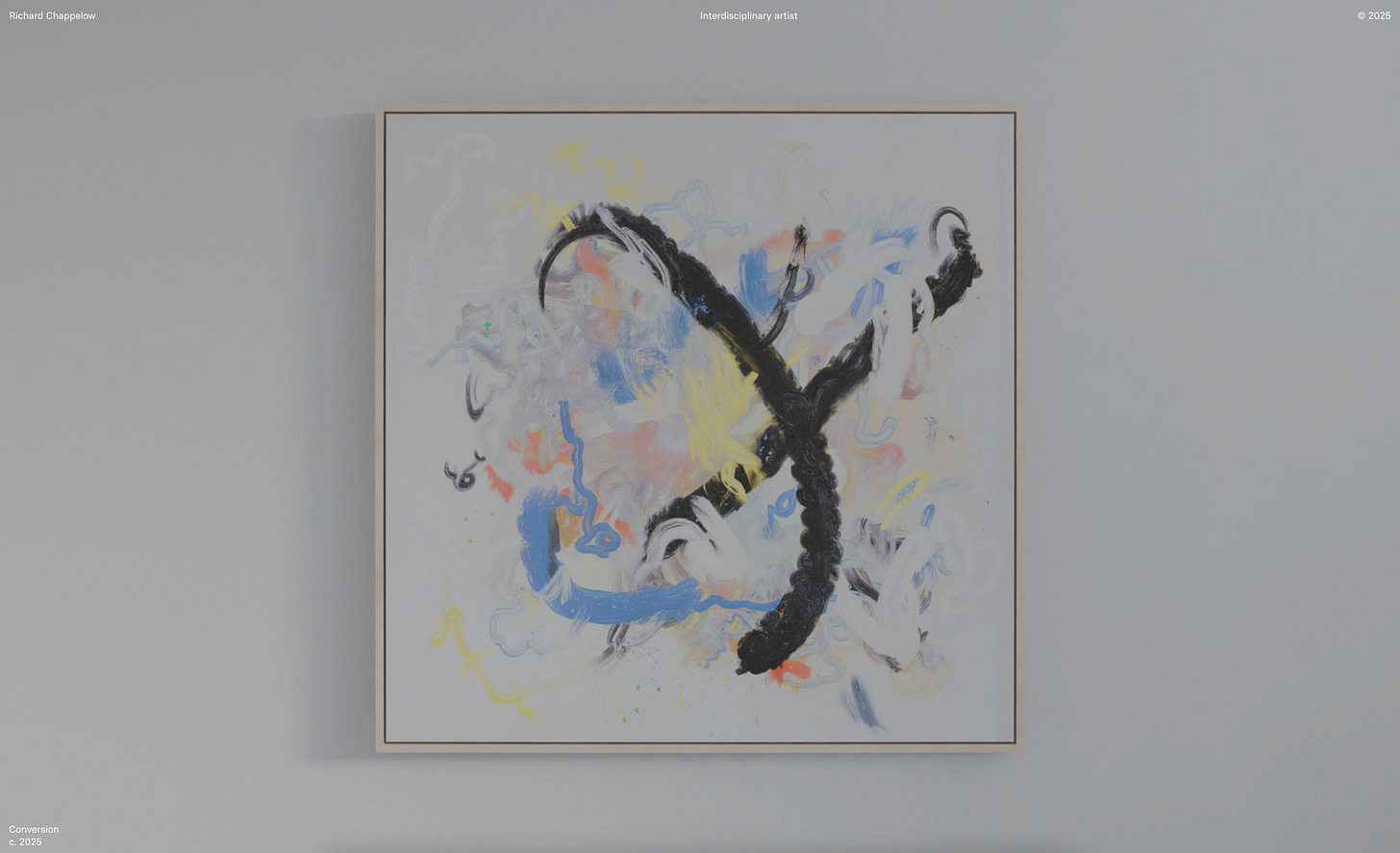Finding Rhythm
New home. New ideas. New website.
Painting has been at the heart of my practice for years. But with a recent move, and the beginnings of a new studio, I’ve found myself ready to try something different.
The way I approach things tends to be the same, whether I’m standing in front of a canvas, sitting with my iPad, or putting together music. It’s always about getting out of my own way. Not thinking too hard. Letting the process lead.
And yet, for years, I’ve told myself I couldn’t make anything digital unless I was holding a stylus; that if I wasn’t drawing or painting directly, I didn’t know what I was doing. Coding felt like something completely different. Another language, another way of thinking. One I wasn’t fluent in.
But recently, I’ve started exploring generative art. Slowly. Cautiously. And something unexpected has happened.
I’m starting to feel at home.
I’m using AI tools to help create structures and systems. And the strange thing is—it’s not so different. There’s the same sense of not knowing how something will turn out. The same letting go. The same surprises that happen when you take your hands off the wheel for a moment.
I’m not writing complex code, and I probably never will. But working with these tools has opened up a new space for me. A new kind of collaboration. I give the machine a nudge, and it shows me something I wouldn’t have found on my own. Sometimes it’s messy, a lot of the time it doesn’t work, but sometimes there’s a small moment of yes. Something clicks.
And that feeling is familiar. It’s what I’ve always looked for in my work.
When I first started, I didn’t really know where to begin. So I did what I usually do—I started with a flow.
I spent time playing with Perlin noise and simple randomized tidal movements, watching lines drift and shift in ways that reminded me of where my paintings often begin. Loose, intuitive movements. Marks that don’t need to be anything yet. Just wandering until they find their place. It felt right to begin there, in familiar territory. As if I’d found a current I already knew how to swim in.
That early exploration became a foundation. A way of building a language in this new space without needing to control it too much. Letting it move how it wanted to.
And over time, those wandering lines and patterns started to take on more structure. In the same way, that a painting slowly finds its edges and rhythm, I found myself returning to geometric forms and patterns. Something pieced together from fragments. Repetition and variation. Order and imperfection sitting side by side.
Quilts have this deep history of utility and beauty, of storytelling stitched into something that’s meant to be held and provide comfort. There’s a generosity in them. A kind of slow time. And in many ways, that’s what I’m trying to make here—works that hold rhythm and warmth, even as they’re built by a system that’s constantly shifting.
The Quilts series will be my first long-form generative release. It’s where all of this has led. A body of work that brings together my love of texture, balance, and chance. Each piece follows a set of rules, but no two are the same. They’re built on systems that I’ve made, but I’m never entirely sure what the outcome will be until it’s there, fully formed.
And I like that. It feels true to how I’ve always worked.
If you’d like to test the algorithm you can run it here.
New website
I’ve also been spending some quiet time rebuilding my website. It’s had a range of small improvements—simplified, cleaned up, and more reflective of where I am right now. You’ll find some newer works there, along with details about current projects, and it’s the best place to find all my links in one place.
If you’re curious, or just want to wander through, you can visit it here.
Thanks for reading,
Rich





